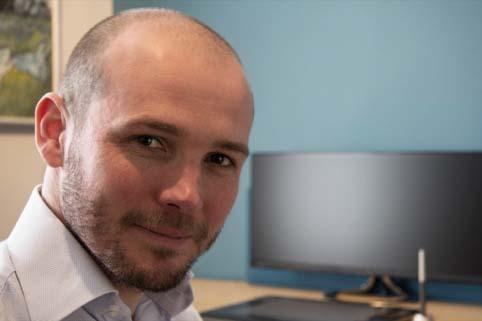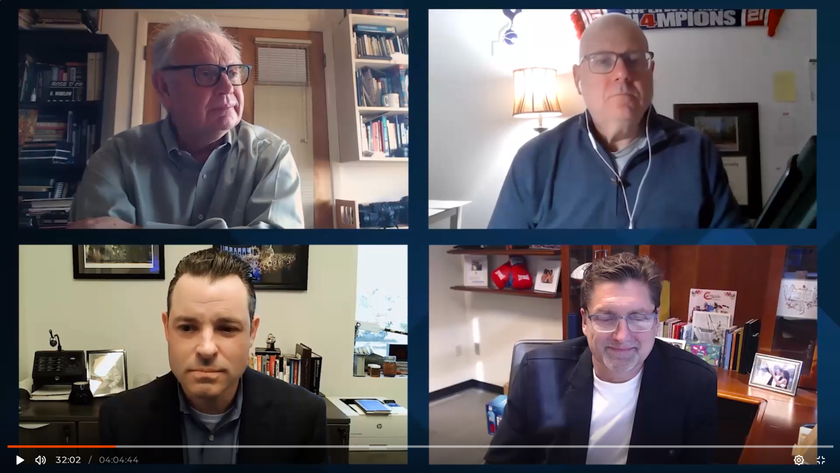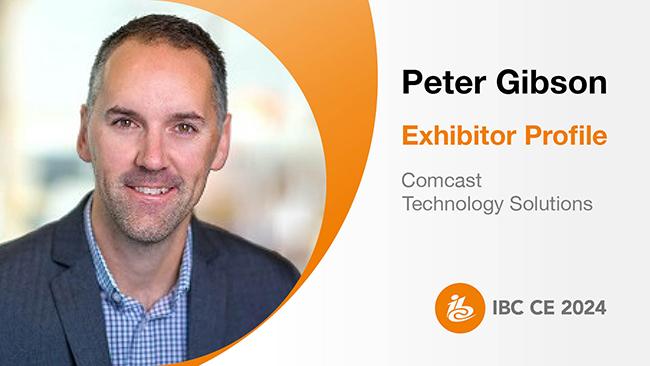NAB 2017 Tackles Tech, Change and Evolving Expectations
LAS VEGAS—Even though the plush carpet is rolled away and cappuccino makers are bubble wrapped back in storage, the flurry of conversations, questioning, test driving and demonstrating that took place during NAB 2017 reaffirmed some irrefutable facts.
That the cloud is a force unto itself. That IP technologies are on the upswing. That UHD, HDR and ATSC are technologies with a devoted following. That 8K and wider consideration of virtual reality are on the horizon.
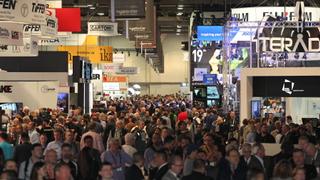
And, that 4K has the opportunity to inspire new generations to get a high-def look at an astronaut’s pores.
It’s not the first time that someone has claimed that this is the year of IP, or HD, or HDR, or 4K. For many of these technologies, signs of some solidification were there. Yet one analyst put it succinctly: there’s a lot of talk, but we still await to see how much real-world action comes from those conversations.
NEXT GEN TV
One area that did garner a lot of positive attention was ATSC 3.0. Since the last NAB Show, WRAL-TV in Raleigh, N.C., had begun broadcasting with the new next-gen television standard, while stations in Baltimore, Cleveland, Portland, Ore., and Las Vegas have been involved in the testing process. At the show, research and consulting firm Devoncroft Parnters hosted a media technology business summit, where network and station group CFOs were wildly supportive of the new technology.
“There’s a lot more to ATSC than I think people are seeing,” said Josh Stinehour, Devoncroft principal analyst and moderator at the summit. Events and announcements at the NAB Show spoke to that support, including live ATSC 3.0 broadcasts during the show, buzz around the ATSC 3.0 Pavilion, regulatory support from commissioners at the Federal Communications Commission, and wide support from the advanced emergency alerting and targeted advertising communities.
For an industry that historically takes the long, slow and steady path to new technology adoptions, the support could be seen as unusual. “I was taken aback by the enthusiasm so many had for ATSC 3.0,” Stinehour said.
FINALLY CLOUD-READY?
Hanging over other discussions was whether the industry was ready for what some say will be a steady progression up into the cloud.
Debate reigned about the merits of cloud-native versus cloud-enabled, and why 2017 might be the year that more mainstream operations begin in earnest to transition their operations to virtualized environments. Citing boosts in agility, scalability and flexibility, a number of media companies are looking into the benefits (as well as the drawbacks) of moving processes like ingest, playout, encoding, OTT streaming and ad insertion into the cloud.
Benefits include monetization opportunities for media companies, new scalability features, the efficiencies that come from cloud workflow operations, and what real-world loopholes exist for media companies jumping into a pay-as-you-go model.
MOVING TO IP
True, the phrase “improved workflow” is bandied about so often it’s nearly lost its punch. Yet it was in full force across the show: from free, new open source codes that propose to smooth media operations to better content management solutions. Many conversations at NAB this year circled around new data management and workflow solutions for modernizing media facilities. “Media companies are challenged to find a balance between tried-and-true production approaches and designing global architectures for the future," said Jason Danielson, media and entertainment solutions manager at NetApp, one of many companies at the show talking about workflow management.
Likewise, everywhere one turned, there were new solutions touting the benefits of an IP infrastructure: when building a new TV news program in Brooklyn, for controlling production switchers via an IP-connected simple tablet, to the benefits of across-the-board IP capability for live productions.
“It was imperative that we adopt a technology platform… that would give us the flexibility and responsiveness to deliver the type of content our audience expects of us,” said Charlie Travis, vice president with Vice Media, a New York media facility that announced its adoption of an IP production infrastructure prior to the start of NAB.
“If we look back at the former transitions of SD to HD, those trends occur gradually,” said Scott Barella, chief technology officer for Utah Scientific, when talking about the move torward a hybrid infrastructure for IP and SDI workflows. “It’s key to show the blend between IP and SDI because this hybrid mix is one way to facilitate the transition.”
Barella is also on the board of directors for the Alliance for IP Media Solutions (AIMS), a consortium of broadcast technology vendors and media companies promoting interoperability in the IP broadcast environment. Since forming in late 2015, the organization has added more than 75 companies and is a strong advocate of the SMPTE 2022 standard for sending digital video over IP networks. The standard is nearly complete and numerous vendors were showing new compatible gear at the show.
Barella discussed the goal of AIMS and the importance of interoperability in the transition to IP, using the decades-old SDI as the model.
The focus of AIMS was to make sure that HD-SDI had the same sort of behavior in the IP environment,” he said. “What I mean by that is when you plug an HD-SDI cable into a monitor or server, there’s no mistaking what that signal is. And it doesn’t matter what vendor is making that equipment. ‘If they say it’s HD-SDI and I plug it in, I know I’m going to get a picture.’ Imagine that same thought in IP.”
SPACE FOR 4K
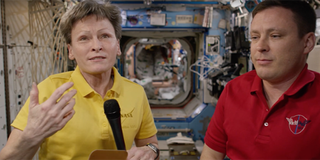
A 4K Connection: NASA astronauts Peggy Whitson and Jack Fischer made mundane tasks here on Earth — like passing a mic around in zero gravity — look otherworldly when the two connected to the show via a 4K live broadcast.
Even technology formats themselves got a high-profile 15 minutes of fame (more than that, frankly) when astronauts aboard the International Space Station (ISS) connected via a live 4K video stream from space.
During the aptly named “Reaching for the Stars: Connecting to the Future with NASA and Hollywood,” ISS Commander Dr. Peggy Whitson and astronaut Jack Fischer made mundane tasks here on Earth — gulping down a bubble of water from mid-air, passing a mic back and forth — look otherworldly.
Following a conversation about the essential role video plays in facilitating the missions of NASA, the astronauts demonstrated experiments made possible in a zero-gravity environment.
“Because we’re going once around the world every 90 minutes, we get to see all over the world,” Whitson said. “There’s an amazing amount of data, [and video technology] allows us to capture that in high resolution.”
Whitson floated the mic in zero gravity over to fellow astronaut Fischer, who said that 4K and Ultra HD is allowing NASA to not only use higher resolution and higher frame rates to capture different science experiments, but “even more important is the inspirational aspect,” he joked, leaning closer to the camera and urging the audience to get a good look at his pores.
“Granted, nobody wants to go there, but everybody wants to see the Earth from this vantage point,” he said. “And by looking down at the Earth with these amazing new technologies, we’re able to inspire an entire new generation of explorers.”
The biggest impact from these new technologies is that it gives viewers the opportunity to see these amazing sites that astronauts see every day, he said. “It inspires us to push beyond just living on Earth.”
The show also highlighted the increasing demand for 4K/UHD back on the ground. “The demand is there [for Ultra HD], and the industry is excited to fulfill it,” said Madeleine Noland, a consultant with LG Electronics, during a UHD session at the show, pointing to predictions from the Consumer Technology Association that 24.5 million UHD sets are expected to be sold in the U.S. by the end of 2020.
ADVOCATES FOR BROADCAST
Despite the ongoing influence of OTT and cable at the show—seen in the decision to welcome CEOs from cable and video streaming companies to headline keynote events—NAB President and CEO Gordon Smith zeroed the focus back to broadcasting during the show’s State of the Industry address.
“When we talk about broadcasting, it’s very easy to talk about change—both in the way consumers access content and the way broadcasters are delivering it,” he said. “But there are some things technology will never change: Listeners and viewers will always want that local connection that broadcasters provide—with the weatherman who tells them if a storm is approaching, or with their favorite DJ who warns them of the traffic building up ahead.”
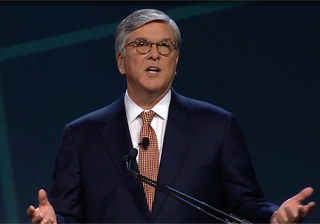
NAB CEO Gordon H. Smith’s advice for broadcasters is to embrace their strengths: "We are live, local and targeted,” he said during the 2017 Opening Keynote address.
“The highest-quality content will always find its way to broadcast TV because of its unparalleled reach,” Smith said. Even in this era of unprecedented competition, he said, TV and radio have ongoing appeal: Broadcast TV airs 90 of the top 100 most-watched television shows every week, with 268 million people tuning into AM/FM radio every week, he said.
We are in the midst of a world that will not stop changing, Smith said. Broadcasters must believe in the virtuous cycle of adopting new distribution platforms to build its overall audience and continue to engage with them.
“[We] need to embrace our strengths: We are live, local and targeted,” he said.
Broadcasters also received key support from one very public figure at the show: New FCC Chairman Ajit Pai. At a session during the show, Pai laid out a regulatory philosophy that broadcasters have waited a long time to hear. “The last thing broadcasting needs is outdated rules to stand in its way,” Pai said to a full house during the show. “That’s why I’ll work aggressively to modernize the FCC’s rules, cut unnecessary red tape and give broadcasters more flexibility to serve their audiences.”
There’s a starting date for those changes: the FCC’s May meeting, in which the commission plans to tackle issues such as the main studio rule and media ownership rule.
The show has completed an arc in terms of attendance. The recession of 2007 to 2009 slashed NAB Show attendance figures by more than 22,000 between 2008 and 2009. In the years since, those number began to climb again. The NAB said there were 103,400 registered attendees for the show in 2017.
The 2018 NAB Show will take place April 7-12 in Las Vegas.
Get the TV Tech Newsletter
The professional video industry's #1 source for news, trends and product and tech information. Sign up below.
Susan Ashworth is the former editor of TV Technology. In addition to her work covering the broadcast television industry, she has served as editor of two housing finance magazines and written about topics as varied as education, radio, chess, music and sports. Outside of her life as a writer, she recently served as president of a local nonprofit organization supporting girls in baseball.

